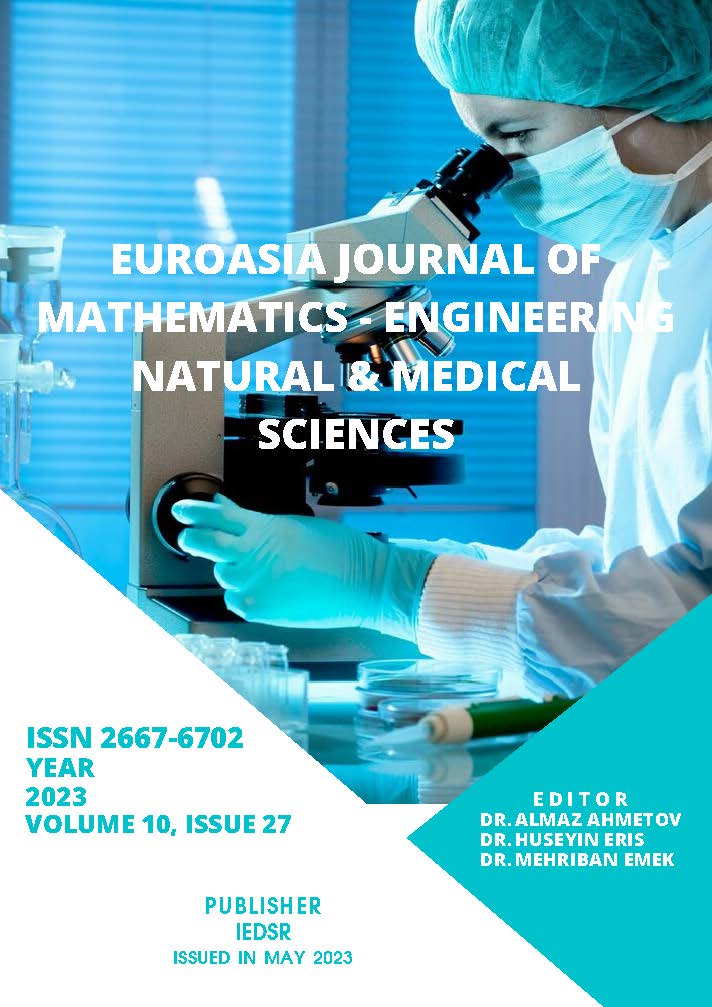Factors Influencing Outcome of Simple Depressed Fracture of Skull
DOI:
https://doi.org/10.5281/zenodo.7968971Keywords:
Depressed skull fracture, head injury, dural tear, hematomas, outcomesAbstract
The primary aim of our study is to identify the factors affecting the outcomes in cases of simple depressed skull fracture. This will help us improve outcomes and give a more accurate prediction of long-term outcomes. This is a retrospective study. We included 161 patients who were diagnosed with simple depressed skull fractures (DSFs) and underwent surgery at our hospital. Patients with comorbidity involving injury to other organs or medical disorders were excluded. We used the chi-square test and Fisher exact test. There was a statistically significant impact on age, sex, Glasgow Coma Scale (GCS) score at presentation, type of DSF, and site of DSF on the long-term outcome of patients. Patients with a GCS score of 13 or more fared well with a good long-term outcome, as opposed to those with a GCS score below it. Any additional brain injury in the form of hematomas has a significant negative impact on the long-term outcome of the patient. Complications such as cerebral contusions, pneumocephalus, and seizures have an adverse effect on the recovery. Our observations suggest that patients brought to the hospital with minimal delay, with a GCS score between 13 and 15, with a simple DSF and normal brain parenchyma without dural tear have the best outcome. Other brain injuries such as epidural hematoma, acute subdural hematoma, contusion, and traumatic SAK, along with depressed fracture, increase morbidity and cause prolonged or poor outcomes. Demographic factors do not affect outcomes. Pneumocephalus, epileptic seizures and dural tears with brain injuries have adverse effect on the recovery of the patients.
References
Al-Derazi T, Das K, Gupta PK, Thajudeen BA, Ravindra J. (2008). Management strategy of depressed skull fractures. Pan Arab J Neurosurg.12:80–5.
Balevi, M, Acar O. Kafa Travmaları (1992).Uzmanlık Tezi. Selçuk Üniversitesi Tıp Fakültesi, Konya.
Fuentes S, Metellus P, Levrier O, Adetchessi T, et al.(2005) Depressed skull fracture overlying the superior sagittal sinus causing benign intracranial hypertension. Description of two cases and review of the literature. J Neurosurg.19:438-42.
Hossain M, Mondle M, Hoque M. (2008). Depressed Skull Fracture: Outcome of Surgical Treatment. TAJ: J Teach Assoc. 21:140–6.
Hussein AA, Laeke T, Yohannes D .(2022). Clinical Outcomes and Prognostic Determinants of Surgically Treated Depressed Skull Fracture in Addis Ababa University Neurosurgical Teaching Hospitals: A Prospective Multicenter Observational Study.World Neurosurg. Feb;158:e55-e63.
Jaggar J, Levin JI, Jane JA.(1984). Epidemiologic features of head injury in a predominant rural population. J Trauma.24:40-4.
Jennett, B; Bond, M (1975). "Assessment of outcome after severe brain damage". Lancet. 1 (7905): 480–484.
Lee KS, Back SH, Bae HG, Doh JW.(1994). Prognosis and complications of depressed skull fractures. J Korean Neurosurg Soc. 23:1143–9.
Muhammad G, Aurangzeb A, Khan SA, Hussain I, Alam S, Khan Afridi EA, Khan B, Bhatti SN.J Ayub . (2017). Dural Tears In Patients With Depressed Skull Fractures. Med Coll Abbottabad. 29:311-315.
Mumtaz A, Ali L, Roghani IS. (2003). Surgical management of depressed skull fracture. J Postgraduate Med Inst. 17:116-123
Satardey RS, Balasubramaniam S, Pandya JS, Mahey RC.(2018). Analysis of Factors Influencing Outcome of Depressed Fracture of Skull.Asian J Neurosurg. 13:341-347.
Van den Heever CM, Van der Merwe DJ .(1989).Management of depressed skull fractures. Selective conservative management of nonmissile injuries. .J Neurosurg. 71:186-90.
Xavier T, Robin M, Agrawal D.(2016). Using a Call Centre for Data Mining and Data Capturing - Pilot Study Using Glasgow Coma Outcome Scale in Head Injured Patients. Stud Health Technol Inform.225:866-7.
Downloads
Published
How to Cite
Issue
Section
License
Copyright (c) 2023 Euroasia Journal of Mathematics, Engineering, Natural & Medical Sciences

This work is licensed under a Creative Commons Attribution-NonCommercial 4.0 International License.

